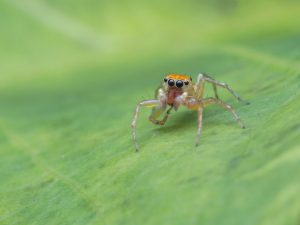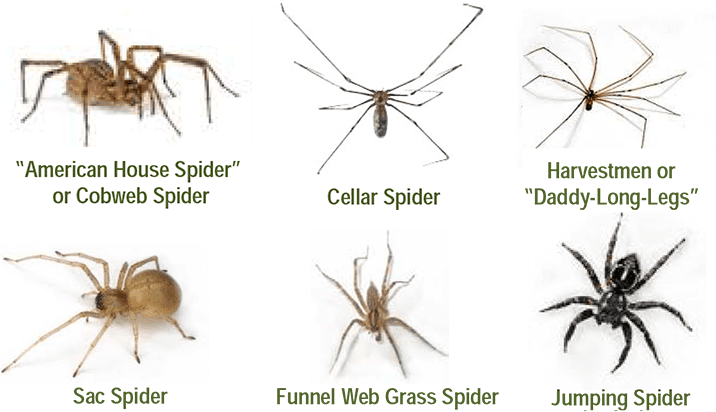Identification and Life Cycle
Spiders are in the class Arachnida, which also contains scorpions, harvestmen, pseudoscorpians and ticks. The more common species of spiders found in New York State are the Cellar spider, Cobweb spider, Funnel Web or Grass spider, Jumping Spider and the Sac spider. Another common species is the “Daddy-long-legs” or Harvestmen, which is often confused with the cellar spider. Daddy-long-legs are not true spiders, but spider relatives.
Spiders have eight legs (4 pairs), an antennae, and most species have eight or six eyes. They all vary in size, shape and color. They do not have chewing mouthparts, but have jaws that include hollow fangs through which venom can be injected to immobolize or kill their prey.
They lay eggs within a silken egg sac that is often ball-shaped and either hidden in the web or carried by the female. They may produce up to 3,000 eggs in a series of several sacs over a period of time. Young spiders emerge from the egg sac and separate, climbing to the top of a nearby object to be carried by the wind. This is called ballooning. For a spider to grow, it must shed its skin, usually 4 to 12 times before it reaches maturity within 1 year.





Comments are closed.